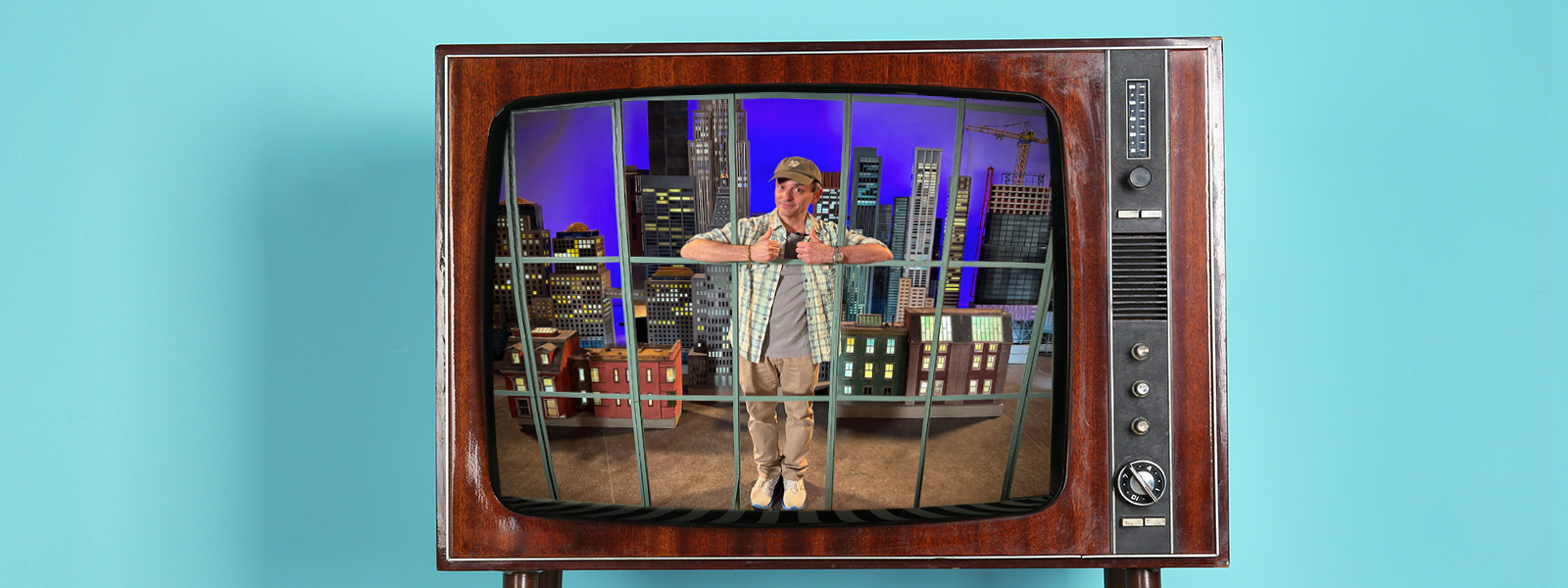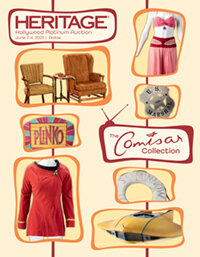HOW A 1970S KID BECAME THE WORLD’S FOREMOST COLLECTOR AND CARETAKER OF TV HISTORY – AND WHY, AFTER MORE THAN 30 YEARS, HE’S PARTING WITH A MUSEUM’S WORTH OF IT
By Robert Wilonsky
It began simply enough in 1989, with two hand-painted title cards from The Tonight Show Starring Johnny Carson that appeared before commercial breaks and promised “More to Come.” These were the first of more than 10,000 artifacts James Comisar eventually acquired over more than three decades of collecting and conserving, restoring and protecting television history.
More to come.
No kidding.
Enlarge
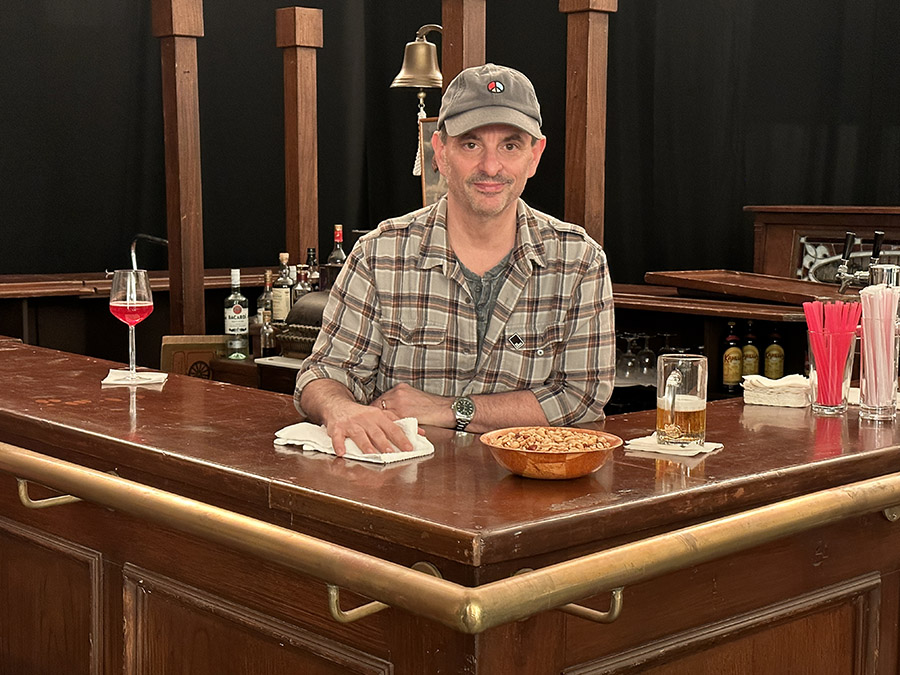
Photo by Josh David Jordan
In time, Comisar amassed decades’ worth of sets, props and costumes spanning the medium’s birth to its Golden Age to the era of Peak TV – from Howdy Doody to Gunsmoke, I Love Lucy to Star Trek, Bewitched to I Dream of Jeannie, The Office to E.R., The Sopranos to Mad Men to Breaking Bad. And everything in between: Johnny Carson’s and David Letterman’s talk-show sets. Archie and Edith Bunker’s living room and chairs. The bar around which the Cheers regulars shared beers and jokes. The hometown signpost from the 4077th MASH. Games from The Price Is Right.
That’s just the beginning of the beginning of an extensive and remarkable list. Comisar spent decades – and millions of dollars – gathering and preserving material and memories enough to fill the television history museum he had long dreamed of opening. If you watched it, he collected it, looked after it and loved it like a family member.
Enlarge
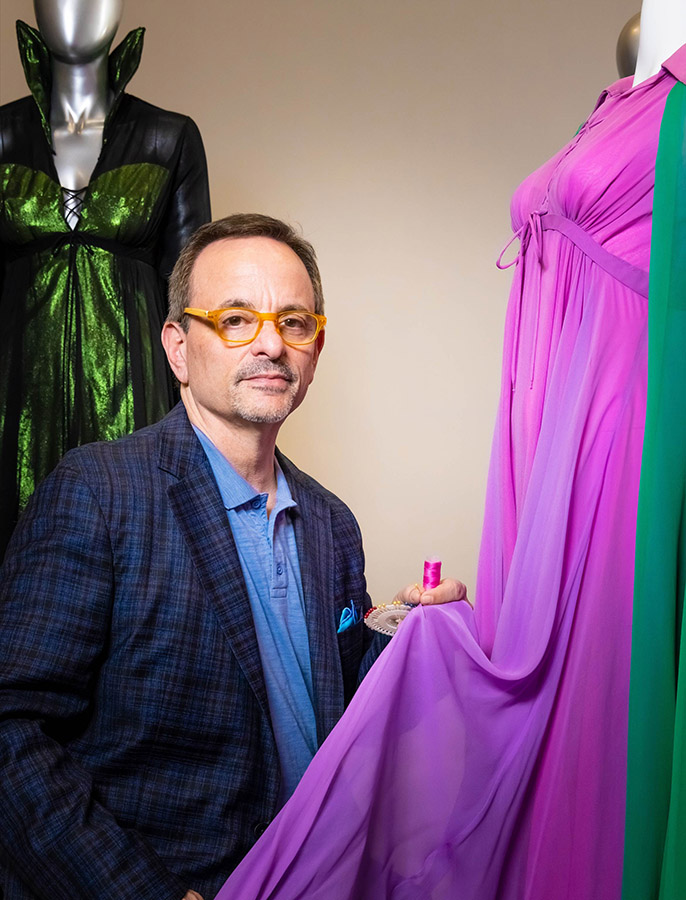
Photo by Josh David Jordan
But after decades of trying to establish that museum to no avail, Comisar has decided to part with a momentous portion of his remarkable collection through Heritage Auctions, which on June 2-4 will offer nearly 1,000 pieces from The Comisar Collection, including the Carson, Letterman and All in the Family sets and the Cheers bar – none of which has ever been to auction. He hopes these historic props, cherished costumes and instantly identifiable sets will find new caretakers, whether they’re collectors, curators, institutions or simply ardent fans of the TV shows that entertained, informed and raised generations.
“After 30 years of saving and sacrificing to acquire and protect this collection, then meeting with studio heads, network presidents, theme parks and different cities across the country, I have come to accept that I won’t be able to establish the museum I always dreamed of,” Comisar says. “I am extremely proud to have done my part in assembling and safeguarding this collection. Now, it’s up to others to take over this cultural mission.”
Time and again, the 58-year-old Comisar says he was a “husky” kid – not exactly the first one picked whenever classmates rolled out a ball and divvied up sides. He was the stockier version of Freaks and Geeks’ Bill Haverchuck, the kid who came home from school, grabbed something from the refrigerator, then snapped on the TV set to hang out with the writers’ creations who became his constant companions.
“I just wanted to go home and watch The Gong Show,” says Comisar, who, at 13, would become the president of The Gong Show fan club and spend weekends at the NBC studios in Burbank, California, watching up to five episodes taped in a single day.
“Batman and Captain Kirk felt like after-school friends or members of my extended family,” he says. “My happy place was sitting in front of the television on our avocado-green linoleum floor. There, I would hang out with Herman Munster and Keith Partridge and all these shows that I didn’t even know were already in syndication.
“That’s why I became so passionate about these pieces: TV was my whole childhood. That was my escape. When I came home and watched TV, when I was just hanging out with the Brady Bunch, I didn’t feel awkward. The TV characters we loved had the same grievances we had. They had the same parental problems that we had. In the real world, none of us had perfect childhoods.” He laughs.
“We all wished our dad could be Mike Brady.”
Enlarge

Photo courtesy James Comisar
In his 2016 book Television: A Biography, esteemed British film critic David Thomson turned his eye toward the giant wooden floor-model consoles that keep shrinking as they become more ubiquitous. Wrote Thomson, “The thing we used to call television doesn’t quite exist now. The sacred fixed altar (the set) has given up its central place of worship and is now just one screen among so many, like the dinner table kept for state occasions in a life of snacking.”
Thankfully, Comisar understood something about us before we did, just in time to preserve it before it all slipped away.
“His collection is as fundamental a representative of our American experience as anything Heritage has ever offered,” says Joshua Benesh, Heritage’s Chief Strategy Officer. “It preserves the history of a medium that is intimately intertwined with our homes and families, one that provides the escape of entertainment while showing us so much about ourselves in the process. And while it’s not always easy to predict nostalgia, James has honed quite the eye for gathering the instantly recognizable relics from more than seven decades of the television medium, each part of our collective history.”
It comes as no surprise that Comisar grew up dreaming of a television career – specifically, of one day working for Johnny Carson, whose Tonight Show set he would stare at on NBC Studios tours during those sojourns to Burbank to watch Gong Show tapings.
Enlarge
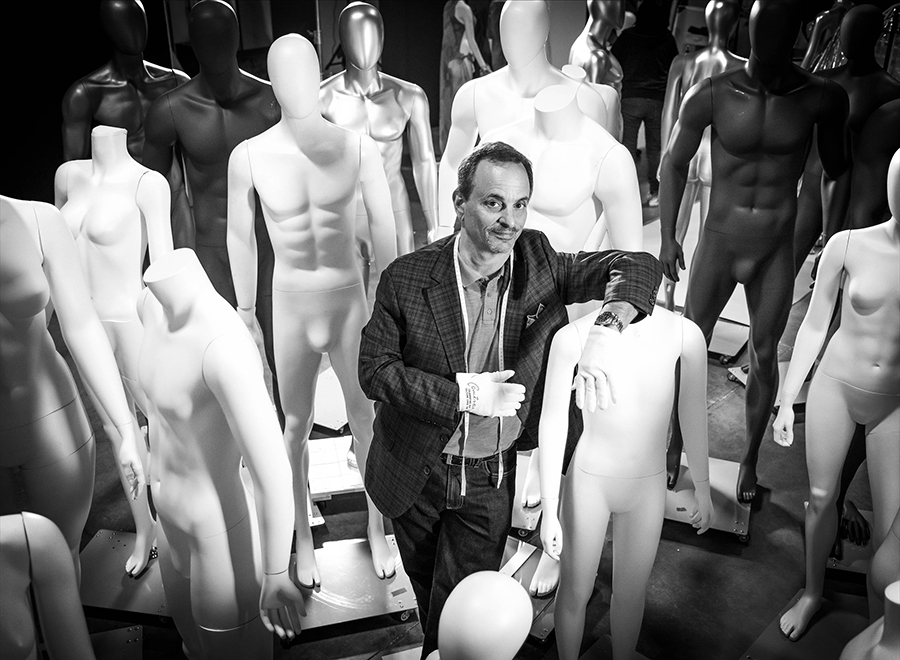
Photo by Josh David Jordan
Comisar eventually got his wish: He punched up jokes for Joan Rivers and Howie Mandel for a time before punching up sitcom scripts for Norman Lear, Ron Howard, Fred Silverman and others. He wrote jokes for the sweaty bachelors trying to come off as clever on The All-New Dating Game and wrote for the critically acclaimed if little seen My Talk Show.
His work on that side of the screen provided him with a peek behind the scenes, where he found familiar costumes languishing on racks and hangers and beloved props piled up on dusty shelves.
“That was the turning point because now I knew where these pieces were, that they existed and that there was no care given to them,” he says. “In fact, if you were a studio and you had a rental house, the most recognizable pieces would be the worst for them because it’s hard to re-rent them. It’s hard to rent a Superman costume, and so often, these recognizable pieces would be relegated to the worst building on the lot with a leaky roof and the rats.”
Years later, Comisar added a Superman costume to his collection – one of the blue tunics George Reeves wore during his televised tenure as the syndicated Man of Steel from 1952 to 1958, which is offered in the June auction. It soars alongside the outfit Clayton Moore wore during his final years as ABC’s The Lone Ranger, the Spanish black felt hat and satin mask Guy Williams wore during his spin as Zorro on ABC in the late 1950s and, best of all, the extraordinarily rare Dynamic Duo of Batman and Robin’s costumes worn, respectively, by Adam West and Burt Ward during 120 episodes of ABC’s Batman in the mid-1960s.
Enlarge
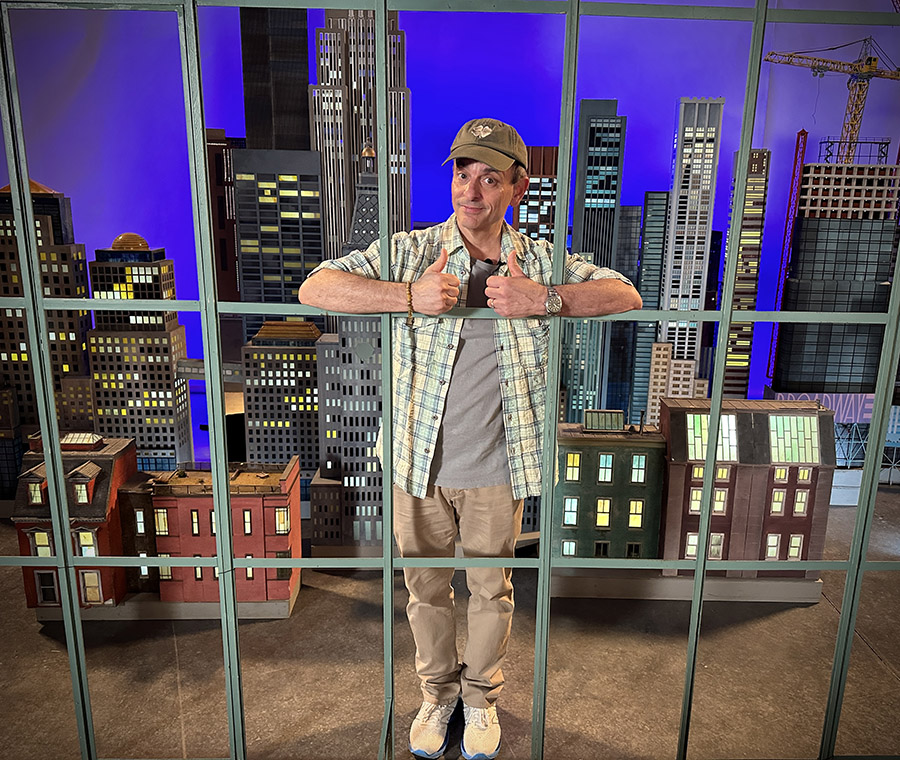
Photo by Josh David Jordan
“When acquiring items like these – pieces that took decades to collect and wouldn’t have survived had it not been for James – you’re getting so much more than the object,” Benesh says. “You’re buying American history.”
Quite literally: Versions of Archie and Edith Bunker’s living room chairs and the M*A*S*H signpost reside in the Smithsonian Institution’s National Museum of American History. But those weren’t the only ones made during those series’ production runs. Comisar – whom Forbes in 2015 called “a one-man Smithsonian of TV memorabilia” – tracked down the remaining survivors to house them in his collection.
The Archie and Edith Bunker chairs in The Comisar Collection were made for the critically acclaimed ninth – and final – season of TV’s most influential sitcom about the man All in the Family creator Norman Lear has famously called a “lovable bigot,” and they were used throughout the run of Archie Bunker’s Place, which followed. The first set had been donated to the Smithsonian following the series’ eighth season, which looked to be its last after a Carroll O’Connor contract dispute.
THE COMISAR COLLECTION HOLLYWOOD PLATINUM AUCTION 7318
June 2-4, 2023
Online: HA.com/7318a
INQUIRIES
Joshua Benesh
214.409.1344
JoshuaB@HA.com
When a second set was needed upon All in the Family’s late-hour resurrection, the chairs were replicated in 1978. That was no easy or inexpensive feat: Producers found an English textile mill that could replicate the chairs’ original fabric, which had to be distressed with a wire brush and other tools to make them look identical to the long-loved pair. It cost $15,000. The originals, from a secondhand store in Southern California, reportedly cost less than $20.
It’s impossible to imagine those chairs anywhere but in the Bunkers’ living room, which Comisar espied in a studio warehouse “sandwiched between a failed game show set and a crumbling, snowy mountaintop carved out of Styrofoam.” The set was peeling, crumbling, disappearing; so, too, were the furnishings and bric-a-brac with which it had been decorated during the series’ historic run on CBS. Comisar says he asked Lear if he could have and preserve the set for his growing collection.
The set was assembled for the first time in decades when it arrived at Heritage Auctions, where it was photographed. And it looks and feels today as it did in the 1970s: America’s living room, where a divided nation assembled every week to watch a family struggle with issues involving civil rights, religion, homosexuality, abortion, women’s liberation, divorce and every other raw headline that still feels like tomorrow’s news.
“Today, each chip or crack or identifying mark in that set is an important part of those production years from the show that changed television forever,” Comisar says. “It’s a miracle this set exists in 2023, and I feel fortunate I could curate and conserve this set, this piece of social history, for 30 years. But I have this theory: All important art, whether it’s a historic piece of yesterday or a timeless work of art, finds its curator. I feel like I’ve taken it as far as possible, but I am so excited to find out who takes the baton from me and cares for and celebrates these sets.”
Perhaps the hardest thing to part with will be the set used during the final decade of The Tonight Show Starring Johnny Carson, including the desk, chairs, couch, Burbank skyline backdrop and other items present the night Carson said his last goodnight to America.
Enlarge

Photo by Fergus Greer
“We all buy the pieces that resonate within us,” Comisar says. And for him, that meant Carson. Because when he was a kid, he begged his mom to let him stay up to watch The Tonight Show or at the very least the monologue that helped “make the nighttime easy,” as Thomson wrote in Television.
The Tonight Show set was gifted to Comisar by Carson only after the collector doggedly pursued the talk-show host’s staff. His collection began with those bumper cards from The Tonight Show promising more to come. Years later, Comisar got to sit with Carson, who couldn’t believe someone wanted his set.
“This has been an incredible journey,” Comisar says. “Who would have guessed that at some point, Johnny Carson would entrust me with this Tonight Show set? The journey from buying a couple of graphics seen on his show to his selecting me as The Tonight Show’s curator means everything to me. The funny thing is, when I came in and started discussing this, he said, ‘I had the tackiest set in Hollywood. Why would anybody want to see this stuff?’ I spent 30 minutes convincing him it should be saved and not taken to a landfill. That’s how humble of a guy he was.
“But giving the best possible care to Archie Bunker’s chairs or Johnny Carson’s desk has been a massive responsibility, and at some point, it needs to be passed on to the next generation. I won’t be here forever, and I think it’s a natural time for a new crew of curators to take these pieces, embrace them, reimagine them and share them with the world.”
 ROBERT WILONSKY is a staff writer at Intelligent Collector.
ROBERT WILONSKY is a staff writer at Intelligent Collector.

